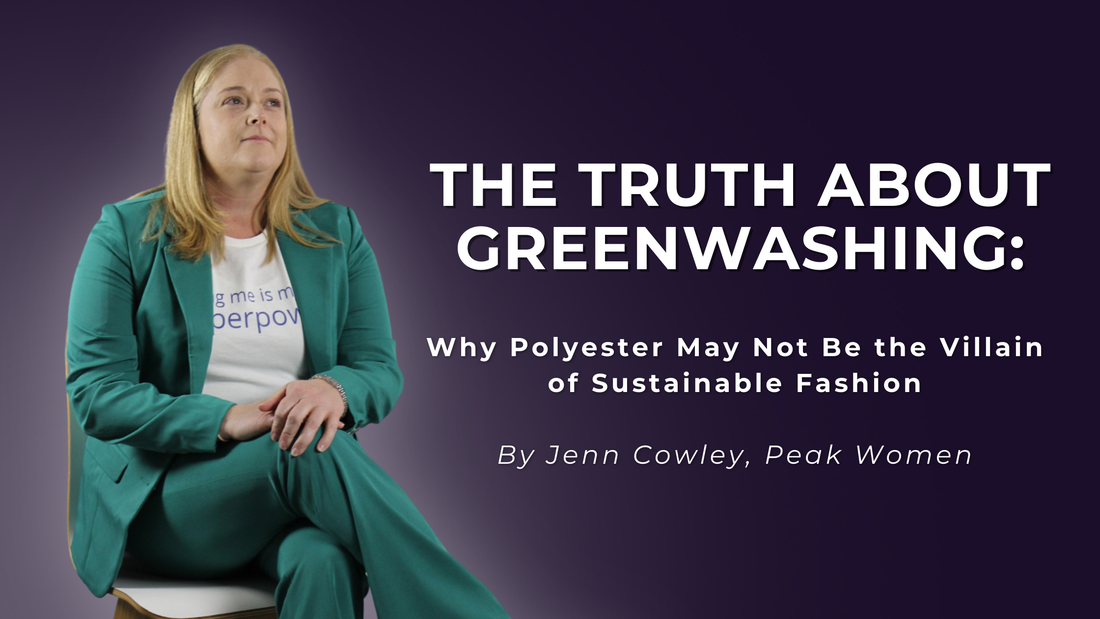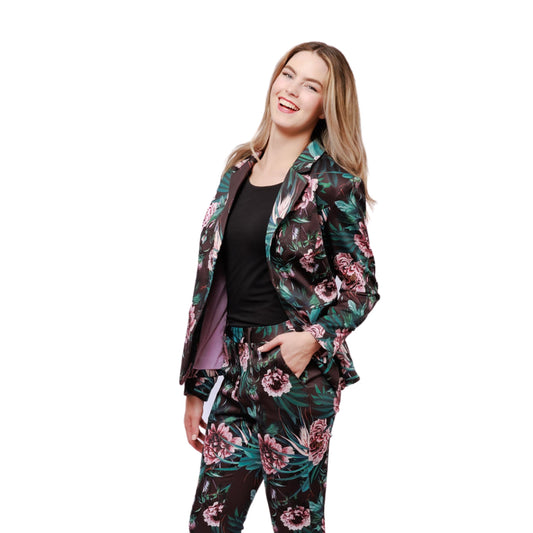The Truth About Greenwashing: Why Polyester May Not Be the Villain of Sustainable Fashion

In the age of conscious consumerism, sustainability sells. From biodegradable packaging to climate-positive branding, fashion brands are becoming increasingly adept at tapping into the ethical concerns of their customers. But beneath the buzzwords and recycled tags lies a growing issue many Australians may not realise: greenwashing. Specifically, the way fabrics are marketed as “natural” or “eco-friendly” without adequate transparency or real environmental benefit.
One of the biggest misconceptions being pushed by the industry is that natural always equals sustainable. While cotton, bamboo, and linen often wear the sustainability crown, their environmental impact is far more complex. Meanwhile, synthetic fabrics like polyester are routinely dismissed as harmful, despite offering qualities that may, in fact, support a longer-lasting and more conscious wardrobe. It is time we take a closer look at what truly makes a fabric sustainable.
Greenwashing in Fabric Choices
Greenwashing is the practice of misleading consumers into believing a product or practice is environmentally friendly when it is not. In fashion, this often comes down to how materials are labelled. Brands market garments made from natural fibres such as cotton or bamboo as inherently sustainable, glossing over the intensive water use, chemical processing, and short lifespan of many of these textiles.
Take bamboo, for example. Although it is a fast-growing plant, bamboo fabric is typically manufactured using harsh chemical treatments to transform the stalk into soft, wearable fabric. The result is often a viscose or rayon fabric that is far from eco-friendly in its final form.
Similarly, cotton is widely accepted as a natural fibre, yet its production is incredibly resource-intensive. A single cotton T-shirt can require up to 2,700 litres of water to produce. Organic cotton reduces some of this impact but often still faces issues related to land use, yield efficiency, and chemical treatments during dyeing and finishing.
Polyester: A Misunderstood Fabric
Polyester, on the other hand, is frequently portrayed as the villain of the sustainable fashion conversation. Derived from petroleum and therefore synthetic, polyester is not biodegradable, which understandably raises concerns. However, this is only part of the picture.
What many consumers are not told is that polyester is one of the most durable, long-lasting, and low-maintenance fabrics available. It resists shrinking, fading, and wrinkling. It dries quickly, holds its shape, and can be washed at lower temperatures. All of these features reduce the need for frequent replacement and lower energy and water consumption over the life of the garment.
From a sustainability standpoint, longevity matters. A high-quality polyester blazer that lasts for five years is a more responsible choice than a fast-fashion cotton one that falls apart after a season. When garments are made well and designed to endure, they reduce overall textile waste and consumer turnover.
Lifecycle Impact: A Better Metric for Sustainability
To truly assess the environmental impact of a material, we need to consider its entire lifecycle, from fibre to disposal. This includes:
- Raw material extraction or farming
- Water and chemical usage
- Energy consumption in manufacturing
- Transportation emissions
- Product care (washing, drying, ironing)
- End-of-life disposal
Polyester scores particularly well in areas like manufacturing efficiency and garment care. It requires far less water than cotton to produce and has improved over the decades with the development of recycled polyester (rPET), which repurposes plastic waste into wearable fabric.
It is also worth noting that because polyester clothing is more resilient, it can handle more wears and washes without deteriorating. Fewer replacements mean fewer garments entering landfills. With the average Australian discarding 23 kilograms of clothing per year, durability should not be underestimated.
The Rise of Recycled Polyester
Another area where polyester is making sustainable gains is in the use of recycled materials. Recycled polyester is typically made from post-consumer plastic bottles, diverting waste from landfills and oceans. Producing recycled polyester uses up to 59 percent less energy compared to virgin polyester and significantly reduces greenhouse gas emissions.
However, not all recycled polyester is as sustainable as it appears. Some manufacturers have begun producing plastic bottles specifically to crush them into fibre, purely to meet the demand for “recycled” fabric. In these cases, plastic is being created for the sole purpose of being recycled — a process that still requires petroleum and energy, and ultimately undermines the intention behind circular design. While the fabric may carry a green label, the environmental benefit becomes questionable if the plastic was never used as packaging in the first place. For recycled polyester to be truly sustainable, it must repurpose existing post-consumer waste — not manufacture more of it.
While not perfect — recycled polyester still sheds microplastics during washing — it is a meaningful step towards circular fashion. It offers a way to transform waste into something useful, especially when used in well-made suits or blazers designed to last.
Quality Over Quantity: The Real Sustainability Standard
In the rush to buy what is labelled “green”, many consumers overlook what is arguably the most sustainable fashion choice of all: buying less, but buying better. Investing in high-quality pieces that last is a powerful way to reduce consumption and waste.
Fast fashion thrives on the illusion of choice and low cost, encouraging consumers to treat clothing as disposable. But every piece we purchase has a cost, if not to our wallets, then to the environment.
That is why we must shift the narrative. Polyester, when used in durable and timeless garments, such as a well-tailored blazer or versatile suit, offers a practical and responsible alternative. These are pieces that support everyday confidence, require minimal maintenance, and hold their shape and colour across seasons.
Educating the Conscious Consumer
As consumers, we hold power not just in what we buy, but in how we ask questions. Instead of accepting a label that says "eco", we should ask:
- How long will this piece last me?
- What are the care requirements?
- How was the fabric processed?
- Does the garment meet my needs long term?
Sustainability is not just about the origin of a fibre. It is about durability, function, and long-term use. And in many of these categories, polyester outperforms many of its so-called sustainable counterparts.
Final Thoughts
The conversation around fabric sustainability is nuanced. While polyester is far from perfect, it deserves a more balanced discussion in the world of fashion and leadership wardrobes. It is time to look beyond marketing labels and dig deeper into the facts.
A polyester suit or blazer, when chosen with intention and care, can be a sustainable choice. It can become part of a wardrobe that empowers women to show up confidently, lead boldly, and live with less waste.
The next time you shop for your professional wardrobe, consider not just what the fabric is made of, but how long it will serve you. Because true sustainability is not just what we buy, it is how long we make it last.







